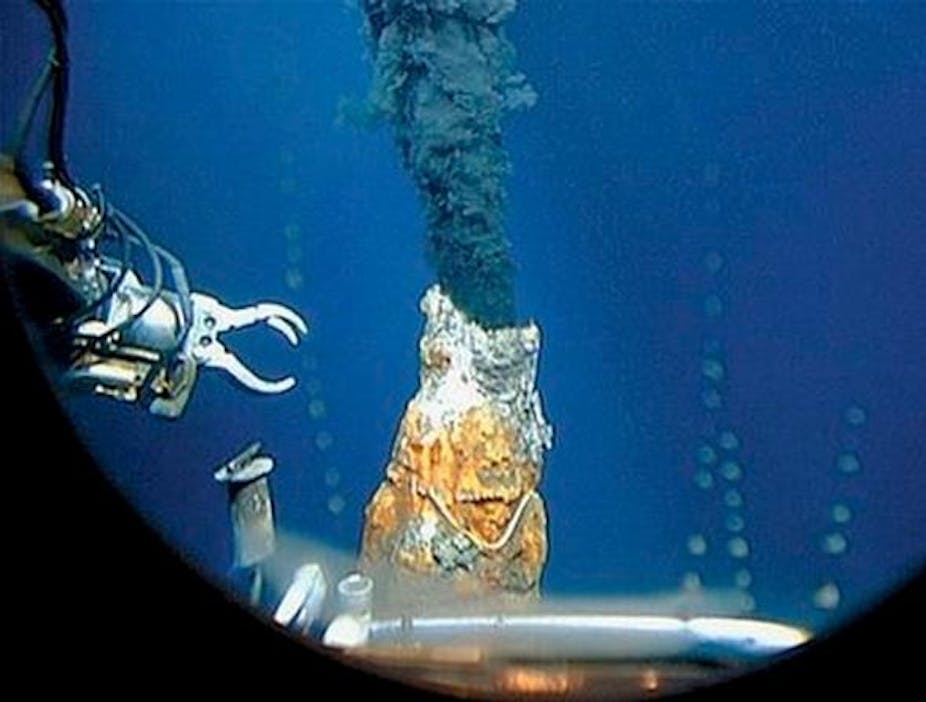Defence behemoth Lockheed Martin’s recent announcement of a venture into deep sea mining (DSM) reflects growing interest in exploiting virgin mining territory.
In what is being described by some as a “deep sea mining bonanza”, the British arm of the US defence firm hopes to exploit rare earth minerals from the seabeds between Mexico and Hawaii. The announcement comes as the world’s first DSM project in PNG is mired in legal and financial strife and the United Nations Environment Programme (UNEP) is finalising a three-volume series detailing the potential social and environmental impacts of this new mining frontier.
Lockheed Martin’s exploration of a 58,000 square kilometre area of seabed, under the auspices of its wholly owned subsidiary, UK Seabed Resources, will adapt aerospace and underwater technologies to extract the resources from approximately four kilometres beneath the ocean’s surface. In a true story more plausible as a Tom Clancy novel, the area was identified as “mineral rich” during the depths of the Cold War, when Lockheed Martin used a ship owned by reclusive American tycoon Howard Hughes to search for a sunken, nuclear missile-laden, Soviet submarine. The lost sub search was carried out under the guise that Lockheed Martin was collecting polymetallic nodules — basically, rocks comprised of manganese and iron — from the ocean floor.
Almost 40 years later, the ruse has become reality, as the firm has utilised this “heritage data” to partner with the UK government to gain exploration rights from the International Seabed Authority.
The questions raised by mining an area which is inaccessible to most and mysterious to many are substantial and numerous. In Australia, CSIRO studies reveal a general lack of public understanding about the seabed and its ecosystems which means that fears – both scientifically founded and unfounded — abound. In many instances, data is unavailable to support or disprove concerns about deep water activities. Little is known, for example, about the processes which lead to the formation over thousands of years of polymetallic nodules, which contain up to 10 times the amount of metal found in their land-based counterparts. Even less is known about how these nodules interact with deep sea life and whether ecological recovery is possible after deep sea mining. And this is before one considers the mining of nodules from hydrothermal vents, recently identified as home to numerous species of animals and microbes.
Despite a lack of data, the push for seabed mining continues, fuelled in part by a rapacious global appetite for rare earth minerals, which are progressively more challenging to source. Every iPhone user or hybrid car driver relies on rare earth minerals to power these modern life essentials. Thus, an entire “blue” economy is emerging from the world’s oceans. Practices including energy generation, aquaculture, and deep sea mining may transform use of the deep ocean and related coastlines.
The UNEP is at the forefront of these issues and is working to institute policies and practices which will support a “green economy in a blue world”. The Lockheed Martin venture alone has an estimated worth of ₤40 billion (AU$58.36 billion) to the UK economy over a 30-year period, with flow-on effects throughout the industry’s supply chain.
But at what cost do we mine the ocean’s depths?
The current problem — and scary reality — is that we simply do not know. Despite scientific advances, the concentrated work of hundreds of scientists globally, and the application of extraordinarily advanced defence and related technologies to oceanic investigations, the deep sea remains as mysterious as the world Jules Verne imagined over 140 years ago. Even without a corpus of scientific data, the UNEP notes damage to poorly understood marine environments; potential chemical seeps from mining equipment; possible ocean dumping of mine waste; damage to future medical, scientific or recreational ocean activities; contamination of seafood; and displacement of local fishing as just some of the environmental and opportunity costs known to be associated with deep sea mining. On the other hand, deep sea mining has the potential to mitigate or prevent certain environmental and social impacts associated with terrestrial mining, including protection of onshore environments and a reduction in community resettlements and loss of land-based livelihoods. But weighing up the trade-offs remains difficult — if not impossible — when so many questions remain.
Lockheed Martin plans to commence operations in five to six years. Let’s hope we have a more solid evidence base before then.

